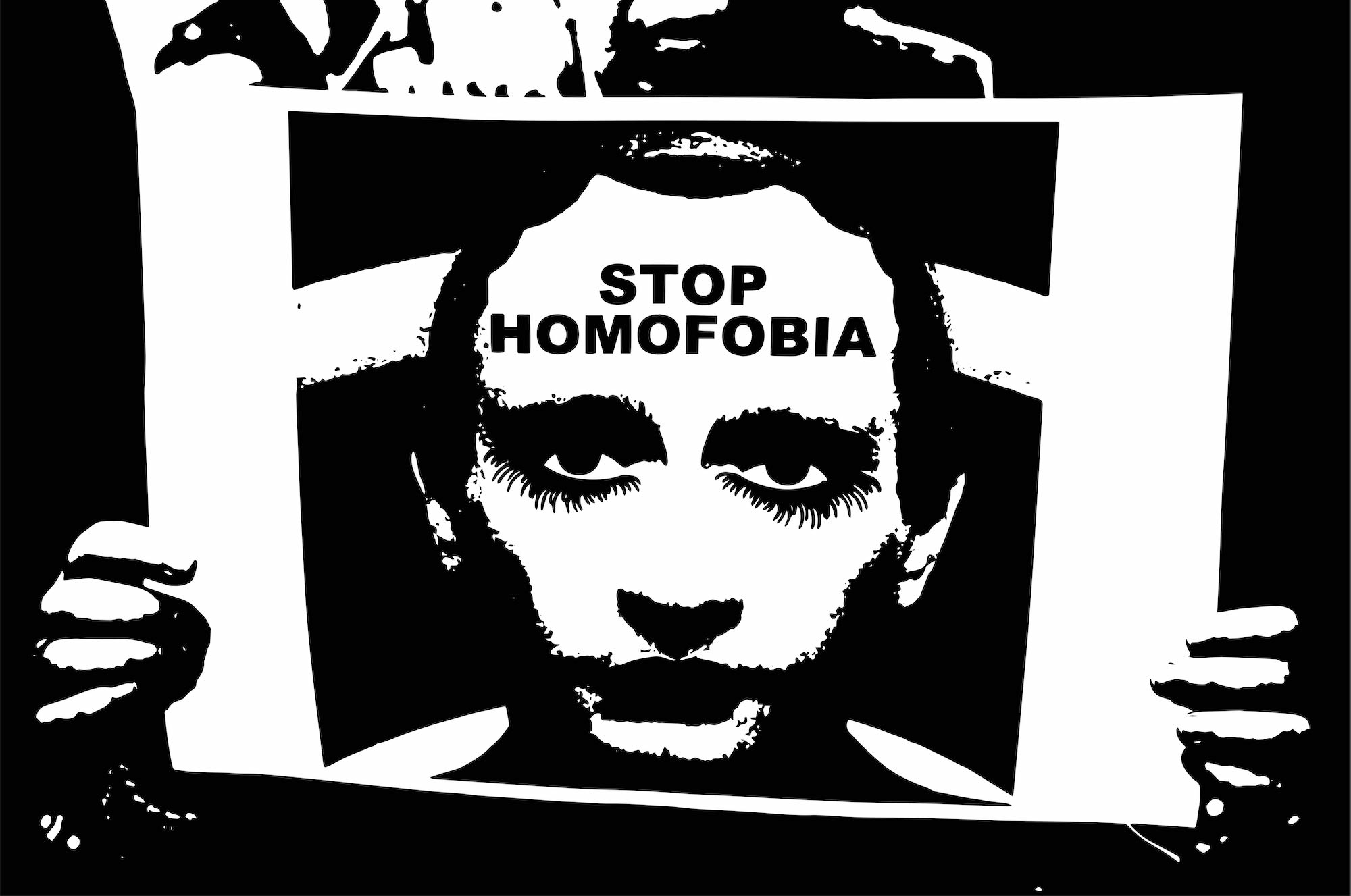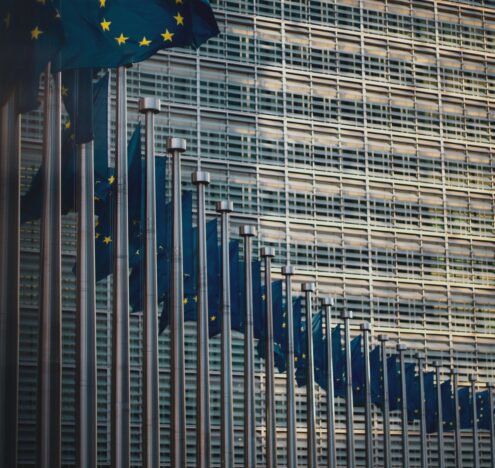Since Russian President Vladimir Putin’s first term in the early 2000s, the country has used strategic propaganda that combines political and sexual discourse to undermine Ukrainian involvement with the European Union and to promote a “new brand of Russian imperialism.” For most of the past two decades, this propaganda has followed the norms of Russia’s political and social spheres to reinforce the value of its “macho” masculine political leaders and to portray its rivals as feminine, homosexual, or otherwise “unnatural” and “degenerate,” attacks that — in some cases — move public opinion in Russia to support various military policies or pro-Russian initiatives.
In Virtual Warfare: Masculinity, Sexuality, and Propaganda in the Russo-Ukrainian War, author Maryna Romanets draws on sexually explicit imagery and language used in Russian propaganda — mainly in Russian social media and blogs — to position the propaganda within the more general political and cultural beliefs of Russian society. Propaganda analyzed in this study is comprised of both text and images propagated through social media and blogs run by state-sponsored media agencies from 2014 to 2017. The images come from an online Russian library that has cataloged thousands of sexually explicit images aimed at degrading Ukrainian and Western political leaders while portraying Putin as the “alpha male of the international arena.” The propaganda texts analyzed in this article were created by a “troll factory” based in St. Petersburg where hundreds of paid bloggers “flood Russian internet forums, social networks, and the comment sections of western publications” with pro-Russia political posts that are strictly informed by each blogger’s daily technical objectives.
Leading up to and during Russia’s annexation of Crimea, Ukraine was the most immediate target of Russian propaganda. Aided by what polling data suggests are widely held sexist and misogynistic values within Russian society, Russian propaganda constructed a relationship of sexual and political dominance between Russia and Ukraine in order to make the adversary come across as weak or incapable, and, at the same time, bolster public opinion of Russian policy in Ukraine. A common theme in the propaganda targeting Ukraine was the portrayal of the Ukrainian President Poroshenko in women’s clothing or engaged in homosexual acts. By using images and rhetoric that represent masculinity as superior to femininity or homosexuality as degenerate, this propaganda created a favorable contrast between depictions of a hypermasculine Putin and a woman-like, homosexual, or sexually dominated Ukrainian President. The characterizations of a “macho man [President Putin] defending the everlasting grandeur of Russia are branded, tailored, and paraded around the public sphere as an embodiment of hypermasculine powers.” They are a patriotic repurposing of what are often considered “traditional” male gender roles, albeit with misogynist and homophobic convictions and stereotypes.
We must also be attentive to how sexual images and rhetoric can be and are deployed in seemingly more progressive western countries to demean or make fun of an adversary.
Importantly, the framing of this propaganda was successful because it resonated with the social beliefs of a deeply homophobic segment of Russian citizens. The author cites 2015 polling data finding nearly 40% of Russians think members of the LGBT community should be separated from society, 15% believe homosexuals are “normal” people, and 20% think they should be “liquidated.” Polling information also showed that Russia as a whole has become less tolerant of gay people and same-sex marriage since Putin was elected. Based on this polling data, the author argues that the overall attitude and apparent buy-in of Russian society regarding masculine supremacy and the denigration of homosexuality provides support for continued behavior that cements these traits in their political leaders. As such, public support in Russia is sustained for policies, such as military action against Ukraine, buttressed by this propaganda. has become less tolerant of gay people and same-sex marriage since Putin was elected. Based on this polling data, the author argues that the overall attitude and apparent buy-in of Russian society regarding masculine supremacy and the denigration of homosexuality provides support for continued behavior that cements these traits in their political leaders. As such, public support in Russia is sustained for policies, such as military action against Ukraine, buttressed by this propaganda.
CONTEMPORARY RELEVANCE
One of the most troubling findings of this study is the apparent ease with which propaganda can be used to shape public opinion. In the case of Russia, propaganda can draw on deep-seated misogynistic and homophobic cultural beliefs to sway public opinion in the service of aggressive policies — cultural beliefs that may have laid dormant or unprovoked if not kindled by the government’s public validation via state propaganda. As easy as it might be to limit this phenomenon to a country with explicitly homophobic views and authoritarian tendencies, however, we must also be attentive to how sexual images and rhetoric can be and are deployed in seemingly more progressive western countries to demean or make fun of an adversary, similarly shaping public opinion in support of certain policies. Examples of this practice range from various homophobic cartoons or memes depicting Trump with other world leaders or images of Hillary Clinton or Angela Merkel with exaggerated masculine features.
PRACTICAL IMPLICATIONS
This article identifies the ways in which sexism and homophobia can be weaponized to achieve political goals, especially the creation of public support for military action. Finding constructive ways to address deliberately manipulative, misleading, false, or weaponized media, including propaganda or claims of “fake news,” is difficult considering the ease and speed with which information can be spread in today’s digital world. In the case examined here, it is not so much the accuracy of such propaganda that is at issue — for instance, it is unlikely that most Russians believe the Ukrainian president actually wore women’s clothing — but rather it is the representations of sexuality and gender, and the power these representations hold in society especially when it comes to legitimizing violence, that matter and that should be challenged. How do we more effectively counter feminized representations of adversaries, especially in a context where misogynist and homophobic views are prevalent — and where we don’t want our efforts to simply reinforce the misogynist assumption that what is feminized is degraded? One approach, of course, would be to resist and dismantle the misogynist and homophobic views themselves. Another approach would be to encourage more critical media consumption, either through educating the public about the various strategies being used in propaganda so individuals can recognize when they are being manipulated or through promoting education and debate on how to identify legitimate news sources and how to critically examine an article or blog to validate its sources and findings.
Published in collaboration with the Peace Science Digest, which summarizes and reflects on current academic research in the field of peace and conflict studies. To subscribe or download the full piece, which includes additional resources, visit their website.





















